
Download the audio for this lecture here:
http://www.mayapurtvarchives.com/p/downloads-2016.html
From Sri Mayapur Chandrodaya Mandir
Date: February 21, 2016 Speaker: HH Bhakti Vidya Purna Maharaj
Subject: S.B.7.1.45-46
TEXTS 45-46
tatrāpi rāghavo bhūtvā
nyahanac chāpa-muktaye
rāma-vīryaṁ śroṣyasi tvaṁ
mārkaṇḍeya-mukhāt prabho
TRANSLATION
Nārada Muni continued: My dear King, just to relieve Jaya and Vijaya of the brāhmaṇas’ curse, Lord Rāmacandra appeared in order to kill Rāvaṇa and Kumbhakarṇa. It will be better for you to hear narrations about Lord Rāmacandra’s activities from Mārkaṇḍeya.
tāv atra kṣatriyau jātau
mātṛ-ṣvasrātmajau tava
adhunā śāpa-nirmuktau
kṛṣṇa-cakra-hatāṁhasau
TRANSLATION
In their third birth, the same Jaya and Vijaya appeared in a family of kṣatriyas as your cousins, the sons of your aunt. Because Lord Kṛṣṇa has struck them with His disc, all their sinful reactions have been destroyed, and now they are free from the curse.
PURPORT
In their last birth, Jaya and Vijaya did not become demons or Rākṣasas. Instead they took birth in a very exalted kṣatriya family related to Kṛṣṇa’s family. They became first cousins of Lord Kṛṣṇa and were practically on an equal footing with Him. By personally killing them with His own disc, Lord Kṛṣṇa destroyed whatever sinful reactions were left in them because of the curse of the brāhmaṇas. Nārada Muni explained to Mahārāja Yudhiṣṭhira that by entering Kṛṣṇa’s body, Śiśupāla reentered Vaikuṇṭhaloka as the Lord’s associate. Everyone had seen this incident.
………………………………………………………………
HH Bhakti Vidya Purna Maharaj
The point of discussion is about the equalness of the Lord, because we have our own particular idea of what equalness should look like. Sometimes the Lord’s actual nature of equalness is hard to appreciate. It seems that so many people get benefit and so many people get difficulties. Nice people are getting difficulties, not so nice people are getting benefits. What is the position, how do you judge equalness? This is the actual crux of the whole spiritual and material consciousness. What do you use as the factor of judgement?
How do you define something? There are unlimited ways you can define, depending on all the varieties of mundane consciousness. Spiritual consciousness has only one way to define it. That makes it easy.
Once you get to spiritual world, whatever aspect is in there, Vaikuntha, Dvarka, Vraja, they all think in one way. It’s all about the connection to Krishna, the pleasure of Krishna. Therefore, there, the decision making point is about how it pleases Krishna. From there you work back into your particular mood, your particular relationship, the particular nature of the rasa that you are serving in. So that will have its unique expression. The central point is always about the Lord’s pleasure, nothing else.
In the material world, then, because every living entity is thinking about themselves, then our view is going to be based on what’s good for me. So something that is not nice, but may good for me, I’ll say it’s nice, but if it’s not good for me, then I’ll say it’s not good. Then we become confused.
From the transcendental platform it is simply, what does Krishna want, what does He like, what pleases Him as a person? That’s what is defined in sastra. Sastra defines what pleases Krishna.
Depending upon the individuals, their particular conditioning, their values and interests, then the pleasure of Krishna will be presented in a variety of ways. From more subtle, more metaphysical, more gross, more intellectual, more sentimental, more attachment or more detachment, any combination.
All the different sastras give the same points, they just use different words to explain it.
Just like you have synonyms, they explain the same thing. But depending on the flavor, the mood, or the situation, you use a different word. The sastras are like that. All they are defining is what pleases Krishna.
What is comes down to is that since it is about Krishna, then how He constructs things, how He arranges things, is going to make for His pleasure. Someone who follows the Vedic recommendation, whether it is known or unknown, will please Krishna. If you know it and you follow it then that will please Him more. If you don’t know it and you follow it, then it’s nice. It’s better than not following.
That is actually the bottom line. How close is it to what Krishna wants. What does He like as a person. That’s why you will see that somebody who is not necessarily a nice person may somehow or another being doing something right.
Let’s say like Robin Hood. You steal from the rich. Stealing is never good. It doesn’t matter if they are rich or poor, it doesn’t matter who they are. Stealing is not proper. But then he gives in charity. He takes gives to people who are in need. That part is good. The other part is not good. For one part he will get a bad reaction and for the other part he will get a good reaction. It’s not that oh he is a thief, everything is bad.
It’s based on what you do. What part is good, is good. What part is not, is not. To take things a bit further, there is the intent on why you’re doing it.
Now, he’s stealing from the rich and giving to the poor. What’s his intent on doing that? That will also have a flavor. Now if he’s giving to the poor because he wants to be well known and famous among that group of people, then he will get less benefit. If you are proud of your charity then you lose the benefit. You boast yes, I gave this much, you know, this and that. You will lose the benefit. Intent is also there.
We see this combination. Krishna is sitting in the heart, He knows what you think. He knows what you feel. He knows why you do everything. That’s the whole point. He knows all of these things. Depending on how you deal, He responds. If you do things right, you get a good result. If you do things wrong then you get a bad result. That’s the equality.
For every living entity, no matter who they are or how they deal, Krishna will see in this way. Therefore, it doesn’t matter your position, you will be taken care of according to how you are reciprocating with Him either directly or indirectly.
Then you have the devotees. That will be a step beyond. For the general public, that’s called sthana, that’s just the maintenance of the universe. For the devotees though it is nourishment. He’s nourishing them because they are doing it consciously with devotion.
Therefore, for the other things, you do one unit and you get one unit – one unit good you get one unit good, one unit bad and you get one unit bad. But for the devotees, because they are doing something to please Krishna then they get so much more, so much greater. The results are much more. Therefore, nourishment.
This, then, is bewildering in general because you can’t tell why people are getting such good situations, who don’t seemingly deserve it. Why do these things happen? For the devotee, the idea is that if you always look at according to how Krishna would look at it, what would please Him, according to His standards, not our standards…sometimes you hear devotees say, oh Krishna wouldn’t like that. But it’s because they don’t like it. Krishna might actually be ok with it.
For Krishna, it’s the devotion that is the main thing. When we say it’s something that Krishna likes, the only thing he actually likes is devotion. What we are referring to when we say the rules and regulations of the scriptures or the recommendations of the scriptures, we’re not talking about the primary, the devotional attitudes. We are talking about the secondary forms, the medium to express the devotion.
The mediums are not the devotion. Therefore, expressing the devotion. But it doesn’t mean that your intent in choosing a secondary medium doesn’t have some connection to devotion.
Am I choosing a secondary attribute because it pleases me or because it pleases Krishna. If it pleases Krishna, that’s sannyasa. I’m doing this work for Krishna. It’s already Krishna’s. If I’m doing it for myself and then giving it to Krishna, that’s renunciation. If I’m doing it for myself and eventually some little bit is given to Krishna, then that’s smaller renunciation.
That’s the whole thing that Krishna will be looking at, not about what secondary is being performed, it’s about the intent of it. Why do you choose what you choose? What is the reason that you do what you do? That makes for the greater point. Then you will see that for the action itself, that will get a reaction. That will come. That you don’t have to have to worry about. Beyond that, it’s going to come to what is the intent in connection to Krishna. That becomes the subtlety there.
It’s about the personal relationship with Krishna. That’s actually the whole point of everything. It’s not about the rules and regulations. It’s not about the forms. It’s not about that. It’s about the devotion. Because it’s about the devotion, it actually starts from devotion.
Here we are starting from the externals working towards devotion. But we have to remember that in the spiritual world, they start from devotion and then there is the secondary manifestation of that.
Mother Yasoda has love for Krishna. That’s the primary aspect. The secondary is that she expresses that particular parental love through cooking for Krishna, keeping the house nice for Krishna, making nice clothes for Krishna, worrying about Krishna. That’s the secondary.
That means how does this work? There the primary is first and then the secondary follows to support it. Then it reflects off the viraja of our desire. Then it reverses. If we look at it, what are we interested in? Are we interested in the devotion that Krishna gets, that love is there? Or is it about the facilities He has and the enjoyment He gets from it? Therefore, it reflects off of our attachment or lust for the secondary items.
The first thing that we do is only deal with the secondary. The primary we very rarely ever get to. It means the devotional we rarely get to, basically, unless we take up devotional service. Even on the mundane platform, actually the purpose of a secondary aspect, very few people know and do. What you do is always going to go back to some good quality.
Why does somebody work very hard to have a house? He has a mortgage, works very hard, saves his money, misses out on so many facilities that he could have, but he’s working for the house. What’s the point of the house? The point of the house is security, safety, and environment in which then members of the family can then have a relationship and express that relationship in a stable and steady way. Because you know it’s going to be the same every day. That’s the point. But the focus is all on the secondary, the external point. It’s about the house. Oh, you have a nice house? Then the family life must be great. You don’t have a nice house then you can’t have a good family life. It actually has nothing to do with that. It’s whether you appreciate the quality of that security, the quality of that relationship. Then you can have something.
That’s what actually makes things function. But by modern advertising, you don’t sell money off of that much. It goes by the secondary, the social, all of these different things, the economic. We are looking at the secondary.
With the scriptures, the first thing we’ll notice are the rules and regulations because that’s where we put all of our focus. So then there are recommendations: these secondary acts are followed by the residents of the spiritual world. This is what they do. This is how they eat, they talk, they walk, they sit, they dress, they dance, this is what they do. If you want to develop love like them, they use these secondary attributes to express that love.
If you use that, it’s a step in the right direction since we don’t have that love. By doing those secondary aspects, connected to the Lord, that we want to do it to please the Lord, it will purify us and bring us to that platform of devotion for Krishna. It’s not the forms we are using that makes the devotion, it’s the intent in using it.
The reason that we choose it is that it’s what has been recommended to us by the great personalities. What do we know about the spiritual world and what is going on there? But the great personalities, they know, they’re from there. They know what pleases Krishna. They know what their superiors do. They are just assisting them.
The devotee is doing these secondary things to please Krishna with the intent of developing that love. Therefore it’s nourishment. For the non devotees, they’re either just following the rules and regulations the vedas give by determination or haphazardly because human beings and nature tend to do nice things here and there. Then they get the reaction to that, the result of that.
If you look from this perspective then you can actually see how Krishna maintains, how He reciprocates with each and every one. If one uses another formula, one will find that it will be very confusing.
So this is what Narada Muni is explaining, that it’s the aspect of pure devotion that makes things work. That’s what is actually the functioning point. Everything else is simply something to support that. There are recommended aspects of support, things that are neutral, and things that are opposed. The acharyas discuss these things. Srila Prabhupada tells us what is useful and what is not.
He is pointing out here that because of their contact with Krishna, because of their absorption in Krishna, they are going to get something. They are thinking of Krishna. The point is that one should always be absorbed in thinking of the Lord.
Ravana, Hiranyakasipu, Sisupala, they are totally absorbed. Therefore being killed by the Lord, they don’t know He’s the Lord, but they get material facility. Understand that connecting oneself to the Lord gets benefit. They’re getting benefit. One could say they are demons, why are they getting this benefit? But they are getting benefit because they are actually connecting themselves to the Lord.
It’s just like we see that the demons follow Sukacharya, they surrender to him, he’s the guru, they do what he says, and they get elevated to the heavenly planets. Indra offends his guru and he ends up sitting in a lotus stem in the manasarovara hiding there. If you look at the lotus stems carefully you notice that they’re not very big.
That’s just how it works. It’s Krishna’s system, it’s not our system of how we say it should be. It’s how Krishna says it should be. That’s what’s going to get us something. We have to look at it from that point. That’s the perspective. It’s the International Society for “Krishna” Consciousness.
The point is that the consciousness is there. Not that we say oh yeah, yeah, what about this thing. No. That “is” the thing. Then you choose the best secondary to express it. It’s not about the secondary. It’s about what is best to express the primary. If you make it about the secondary then you’ll miss the point, you will miss the primary. It’s which one to do, which one matches the situation.
That’s what the vedas are all about. What are the time, place, and circumstance to see one’s Krishna Consciousness in connection to Krishna and to see that consciousness to engage it in Krishna’s service. That’s what the vedas are talking about. They talk about all the different situations, all the different activities, all the different results that you can gain. But that’s only so you can decide which one is best for serving Krishna right now. Nothing else.
It’s not time, place, and circumstance to get it practically done for me. It’s time, place, and circumstance to actually express devotion for Krishna. Then, by the practical activity, practical results will come. The point is that your consciousness will define whether you get devotion from that practical endeavor or not.
Are there any questions or comments?
A question regarding sannyasa and renunciation, ok. The difference between sannyasa and renunciation. Ok.
It’s a simple, simple point. We are talking about it in connection to Krishna Consciousness. We are not talking about sannyasa and renunciation outside of that.
Basically, you have an activity that you perform. And from the activity it will generate a particular result. That’s just how, by the laws of the Lord, His energy transforms. You follow the law correctly and it transforms in a particular way. You don’t follow the law then it transforms in some different way.
If I engage in a particular activity that will result in transformation of the energy that will produce a particular result, why am I doing that? It’s not the activity itself because we always take everything as it’s this or that. It’s why you’re doing it.
Remember, the jiva can desire. We are not the one that’s doing it. The energy itself is transforming. Just like if I put something in a blender and push the button, I don’t blend it. I can say I blended it, but I didnt. The machine blended it.
What’s your intent in doing that? So if your intent in doing this is that the result is Krishna’s, that means that before I start, it’s Krishna’s, then that is called sannyasa. The result has already been given to Krishna.
If I perform the activity and the idea is that it’s my activity, my result, and then I’m going to give the result to Krishna afterwards, that’s called renunciation. That can mean that I can give all of it to Krishna or part of it to Krishna. So it’s depending on how great is my own desire.
The more I see it all, that whatever I’m doing is in connection to Krishna and that’s it, then that’s sannyasa. That means that is the ideal in the vedic system. It’s that everybody should be sannyasa.
We have eight different ways to express that mood of sannyasa through the varnashram system. As we said, you have to have an expression for the mood. Socially we have the varnashram system.
Ekalavya das: Maharaj, could one say that sannyasa is bhakti and that renunciation is karma mishra bhakti?
Maharaj: You can say it like that. It could be karma mishra, it could be jnana mishra. The point is that there is something mixed. Because it’s connected to Krisna, you will get purified. By getting purified, knowledge and detachment come, so eventually by good association, you come to the platform of pure sannyasa. That means that anybody can come to the platform of sannyasa no matter what their situation. That’s what we are trying for.
When we talk about giving up the results of things, we mean that’s it’s done to please Krishna. We don’t mean that you don’t work in the field. We’re not saying that grihasthas don’t make money and take care of the family, but why are they making money? Why are they taking care of the family? Is it about Krishna or is it about themselves? If it’s about themselves, then it’s renunciation. If it’s about Krishna, then it’s sannyasa.
Therefore, you see very attached persons as grihasthas and you see the paramahampsas as grihasthas. Priyavatra is a paramahamsa. He was asked to become a grihastha and become the king. He was a paramahampsa all the way through. He’s simply using grihastha ashram to perform those duties to please Krishna.
Most people take up grihastha ashram because they like the results and working in that field of endeavor. They are comfortable there. So they do that for Krishna. So it will be renunciation.
But he would be in that position of sannyasa. Because it’s not about him, he does the duties nicely. Therefore he will look like an attached householder. That was the doubt and the questioning about it. How is it that by attachment, you’re not going to get devotion if someone who has devotion would never manifest attachment? How is it that the prajatas are in family life for a long time? I think it was for a million years. At the end, they became great personalities and went back to Godhead. That’s because they were great all the way through, but, you only see externally when they gave it up and took to the renounced order, then you see ok now they are detached. But they were detached all along. It was all about I’m following grishastha life simply because it will please Krishna. Therefore they do it.
It’s like a drama. A good actor plays his part well. It’s not that he thinks I am that. Except for, you know, the Stanislavsky-ists. They’ll say I am that. But technically you’re not, right?
They are there playing their part. And they are playing it well. To everyone else it looks like here is a very attached grihastha. You can tell by other symptoms that they’re not because family is happy, family is this.
It’s an interesting point that, I think it’s fourth canto, the discussion that Srila Prabhupada brings up is about attachment and hatred. When we see hatred we see all of the isms and all of the fractional kind of things. That comes up because there is material desire. If there is no material desire then you don’t see that. That’s how you see the symptoms.
When you see the Pandavas, do you see that they see there is us and them? No. But with Duryodhana, you do. He has deisre. Yudisthira doesn’t. That means Yudisthira is running his kingdom, he’s dealing with wife very gently and nicely. He’s not going, hey I don’t need this, I want to chant my japa, why are you being so trippy. No. He deals with everything. He deals perfectly with all of the household elements. It’s because Krishna says that is how the grihastha ashram should run. He’s doing it to please Krishna. That’s called sannyasa.
The idea is at the lastest, you attain that by the time you take sannyasa. When you take sannyasa, now you don’t have anybody else to work for so it should be that it’s about Krishna. At least there, then, if you haven’t developed it before, it’s like with the trapeze you have the net below. If it doesn’t work before that then at least by this time you get it right.
In the vedic system, it starts before, like Prahlad Maharaj. Here, he’s already sannyasa and he’s three years old. That’s the point.
Sannyasa is the mentality, then it has its natural, external form. The confusion comes because grihastha doesn’t look like sannyasa. If it’s done in Krishna Consciousness, then it is.
Is it about Krishna or is it not? That’s why we have to look at that as the first. Then we start looking at the secondary and the forms and how they match.
Vaishesika dasa: Hare Krishna Maharaj. Thank you very much. Very insightful, as usual. Recently, having a discussion with a god brother about agyata sukriti. His position is that in ISKCON, we depend on the idea too much of agyata sukriti. To support his point, he quotes the last verse, 28, in chapter 17:
But sacrifices, austerities and charities performed without faith in the Supreme are nonpermanent, O son of Pṛthā, regardless of whatever rites are performed. They are called asat and are useless both in this life and the next.
I was wondering if you could help to describe what happens in agyata sukriti.
Maharaj: It’s useless. That’s why you don’t get rid of them. And then others are not nice, useless, you’ve just forgotten about them because they got in the closet or you got busy and stuff.
We’re used to the idea that nice means useful and not nice means not useless. But actually, if it’s connected to Krishna, it’s useful, and if it’s not connected to Krishna then it’s useless.
That’s why there is so much discussion about these pious activities, the recommended activities, charity, austerity, penance, all the good qualities, tolerance, humility, respect, all of these different things. These are the ideal secondary mediums to engage in Krishna’s service. Unless they are engaged in Krishna’s service, it’s just so much niceness and temporary and ultimately, it’s useless.
That has to be clearly understood because otherwise we tend to judge useful and useless by its secondary position and by our value system, what we value as a secondary item by our conditioning. That tends to cloud the thing.
Agyata sukriti means unknowing devotional service. That means someone has done devotional service but didn’t know it was devotional service. That’s why it’s agyata sukriti. If they do devotional service and they know it’s connected with the devotees, that’s where it becomes devotional service.
That’s why the point I may be projecting here that we may be working from the point too much that we’re depending on agyata sukriti because we are exposing people to devotional service, but, due to sometimes shyness or anxiety that people won’t be comfortable with it, we don’t mention about devotional service. Then, all people get is agyata sukriti.
Let’s say that we are distributing prasada but they don’t know it’s devotees. They’re taking prasada, they’re getting devotional benefit, that will be eternal. Agyata sukriti is eternal. It’s pious activities not connected to Krishna are the ones that are temporary.
They will get eternal benefit but the problem is that they won’t contemplate devotional service or devotees. They will have to wait for that volume to pick up and there’s no impetus for it to pick up any quicker. Once agyata sukriti reaches a certain volume, then it will transform into sraddha or faith. If they see we are devotees and they are taking prasada, and they appreciate the devotees, now they are getting more agyata sukriti. Much more quickly they will come to the point of sraddha.
That’s why, if it’s at all possible, you always make it clear that this is connected to the Lord, that this is devotional service. The idea that if you just leave it in the background, it will happen, yes it will happen. But it’s not necessarily that we’re getting as much credit as we think we deserve.
These things are arranged. Krishna is already doing that. He is arranging that these things happen. He has arranged that the guy had some interest. “What’s going on? What’s happening in life? Why is my life like that?” So his alarm didn’t go off. He was late. He missed the carpool and had to take the bus. When he got off he had to walk some distance and walked by the harinam party. Krishna is already doing the agyata sukriti stuff.
The whole point is that he doesn’t press. But Lord Caitanya is worried about that. People don’t know. Advaita Acharya says I’m already arranging that, no one’s responding. He’s calling Lord Caitanya who is taking the mood of the devotee that so that devotees will tell you here’s Krishna. I know that you’ve done nothing to deserve it but hey, take it anyway. Where Krishna is only if you desire it, if you take a step forward, He’ll reciprocate.
That’s the point of devotees and preaching that they please Krishna more than anyone. That the first offense is offending the devotees. It’s because they actually go out and are bold about it. They preach. That’s the whole thing. That’s what preaching is, to get it across to the person in a way that they would be attracted.
That idea that I just kind of put it there and leave it and disappear, that’s ok. At least it’s around. The real credit is going to be that if I do something. Let’s say, for example, the husband has done something wrong, he’s upset the wife. The tendency is that he just sits there and won’t something and waits for the wife to respond to it. But she’s waiting for him to do something because she’s in the feminine position. He does nothing, she waits for a little while, then she gets up and leaves. He’s going, now what’s happened? When she was expecting him to try, and he’s worried that if I try something, she’ll reject it. But at least he should try – if I try something and she rejects this, or try that and she rejects that, until you get one that works.
That’s the thing that is pleasing, that effort, how? We’re presenting this, it’s more of a delicate situation, but what wording could we use? What examples could we use? What kind of setting could we use that would interest them in Krishna Consciousness? That they know that this is Krishna Consciousness. Because nothing is more attractive than Krishna Consciousness to the soul. Nothings is more sophisticated or refined. Nothing is more intellectual. Nothing is more practical.
If one has that faith, people will find it. If one doesn’t have that faith, well of course, the karmis are more sophisticated, more intelligent, more professional, more this, so who are we? We just kind of sit back and throw it out and maybe they’ll notice.
But if you have faith that there is nothing better than Krishna, he is the most attractive, he makes the atoms hold together. The gravity they talk about, Krishna enters, they say there is a certain mass. But what they forget is how does this mass hold together? You have to have gravity in the first place to get mass. That means Krishna enters each atom and because of that mood of Madan Mohan, they get attracted to each other. He is the attractive feature that makes everything work.
So if we can present Krishna in wording and examples that the individual can appreciate, then they can take up Krishna Consciousness more quickly. Otherwise, if we just leave it to chance, who knows how many lifetimes it will take. The way people are going these days, there are going to be a lot of lifetimes in between their next human life. It mentions in the sastras that they go to hell for so many times, they go through so many animal species, then they come back to the human form of life and they get another shot. By engaging them in agyata sukriti nicely, then that can be hurried up.
Agyata sukriti is always good, but like you said, to depend upon it, that it will work on its own without my endeavor – so another is thing is that I’m making the endeavor and then we leave it up to Krishna and it’s totally up to Him, that dependence is good. That’s proper. Not, oh, I did this preaching so therefore I made the devotee. No, Krishna.
But this thing that we don’t want to be too pushy and this and that, you know, why don’t we hide in the closet and that kind of thing, people would like that, right? How is that going to please Krishna? That’s why the devotees are there. That’s why Lord Caitanya took the mood of Radharani, so He could preach. That’s why Lord Caitanya is preaching. But then, is anybody else?
Rupa Gosvami said no, we’ll do this for you. Therefore, those in the line of Rupa Gosvami, they’re bold. It doesn’t mean they’re not nice. We take that it means oh it’s not nice. That’s why I’m saying we have to go by Krishna’s definitions, not ours. Modern says bold is not nice.
But if you look at it, let’s say you had a five year old kid. You’re sitting in the airport and this five year old kid just walks over to you and says hi, what’s your name? That’s bold. But you would say that’s nice. There’s no agenda.
Boldness without agenda is good. People like it. But boldness with agenda, that’s the problem. What we have to understand is that all of these good qualities are good when they are connected to Krishna. If they’re not connected to Krishna, no matter how nice they are, they’re still temporary.
The guy is a nice guy this lifetime. Next life, what’s he going to be? A nice deer? I just read about how they have these little miniature donkeys that are this big. People keep them as pets. They say they’re really, really nice, they like kids. Ok, so he becomes a nice miniature donkey in someone’s back yard. He takes care of the kids, loves kids. But he’s a donkey.
That’s the point. He’s nice. But next life he’s going to be a nice what? So only when that niceness is connected to Krishna does it become of value. That’s what the Bhagavatam does from all other scriptures. All other scriptures tell you how technique works, and how, understanding the technique, this is how it connects to Krishna.
All Bhagavatam does from the first verse is tell you this is how you connect to Krishna and these are the things that you can connect. It starts with the primary and then shows how the secondary has been used by the great personalities. All of the other literatures show what are the secondary and how people have connected it to Krishna.
Do you understand the difference? One shows the science and then there is the connection in a few verses. The Bhagavatam is all about the connection, and then the connections are given through the examples of kings and householders and sannyasis and brahmans, and all kinds of situations.
That’s why it’s the paramahampsas scripture, because it’s talking about pure devotional service. The other ones are talking about activities that you could engage in Krishna’s service or not. They’re pious activities. But they are the recommended activities. Devotees are supposed to be pious, live a pious lifestyle, pious by Krishna’s definition, not by ours. But do that for Krishna because being pious is not enough. It’s a nice way to spend your time here, but you’ll spend your time here. But if you do it in connection to Krishna then you’ll get out of here and go back to Godhead.
Last question, yes?
Devotee: Hare Krishna Maharaj. Since in Kali Yuga people can very easily make offenses to the holy name and Lord Caitanya is very merciful, why don’t the scriptures recommend chanting Lord Caitanya’s name instead of the Hare Krishna Maha Mantra?
Maharaj: Why chant Hare Krishna instead of Lord Caitanya’s name? Because He’s more merciful then why not chant His name?
The whole system is about pleasing Krishna. Krishna is the original form. That’s where His fullness in svarupa sakti is manifest. We see that there are five forms where Krishna is complete. Complete meaning manifesting full potency. Krishna, Lord Caitanya, Balarama, Nrsimhadeva, and Rama. They are called paravastu. So they are full manifestations. They are not expansions of Narayana. They are the original.
We see in all of these other moods, He’s manifesting less interaction with His internal potency. The full expression of His completeness is there in is pastimes as Krishna with Radharani in Vraja. That is the topmost.
To come to that position then we need that mercy. That’s when Krishna, who is Mukunda, who can liberate us, takes the mood of the devotee so that we can actually see the importance of chanting. That’s why we follow the order of Lord Caitanya, respecting Lord Caitanya. Then on His order we chant Hare Krishna. Lord Caitanya said that we should chant Hare Krishna. That’s what He would do.
Therefore, before we start chanting Hare Krishna, we chant Lord Caitanya’s name, but it’s actually about chanting Hare Krishna. That’s what pleases Lord Caitanya.
Again it comes back to this thing that what please Krishna is the actual standard. Otherwise, logically it would look like if I chant Lord Caitanya’s name and He’s the most merciful, I’ll get the most benefit. But He’s the most merciful if we follow what He wants. What He wants if for us to chant Hare Krishna.
We’ll end here.


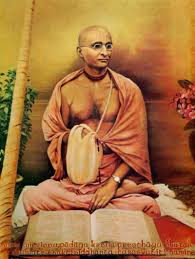
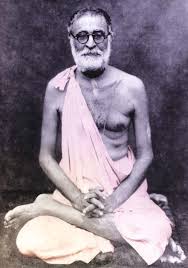



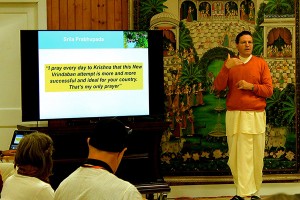



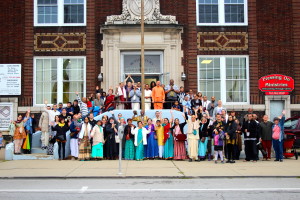
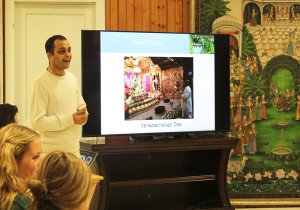
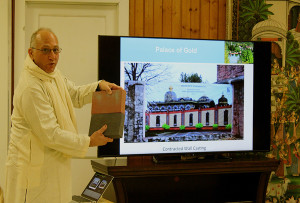

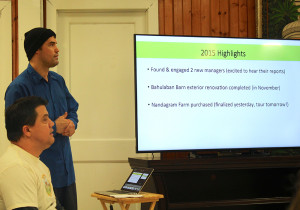

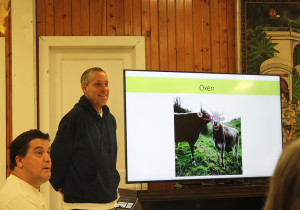
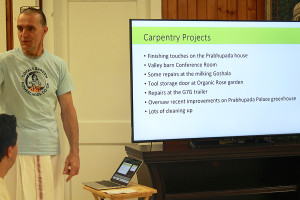






















































 Monthly sankirtan Festival(MSF)
Monthly sankirtan Festival(MSF)
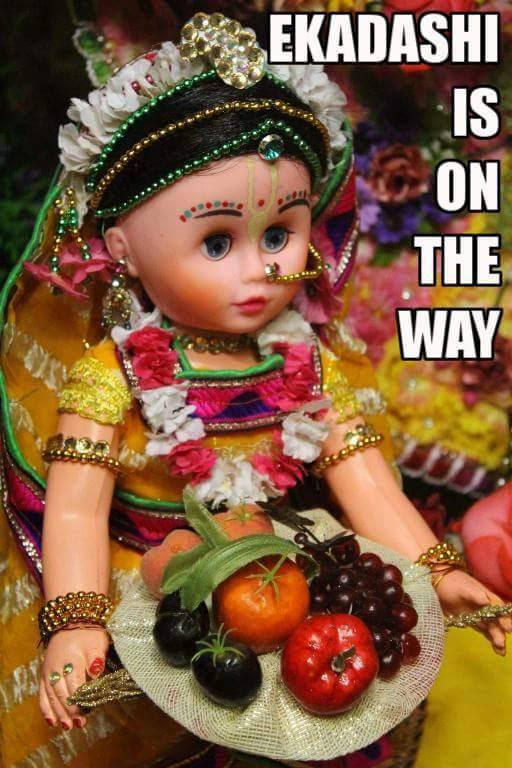 Fasting For Vijaya Ekadasi
Fasting For Vijaya Ekadasi Appearance of Lord Caitaniya(Fasting till Moonrise)
Appearance of Lord Caitaniya(Fasting till Moonrise) Nutritional Consultation
Nutritional Consultation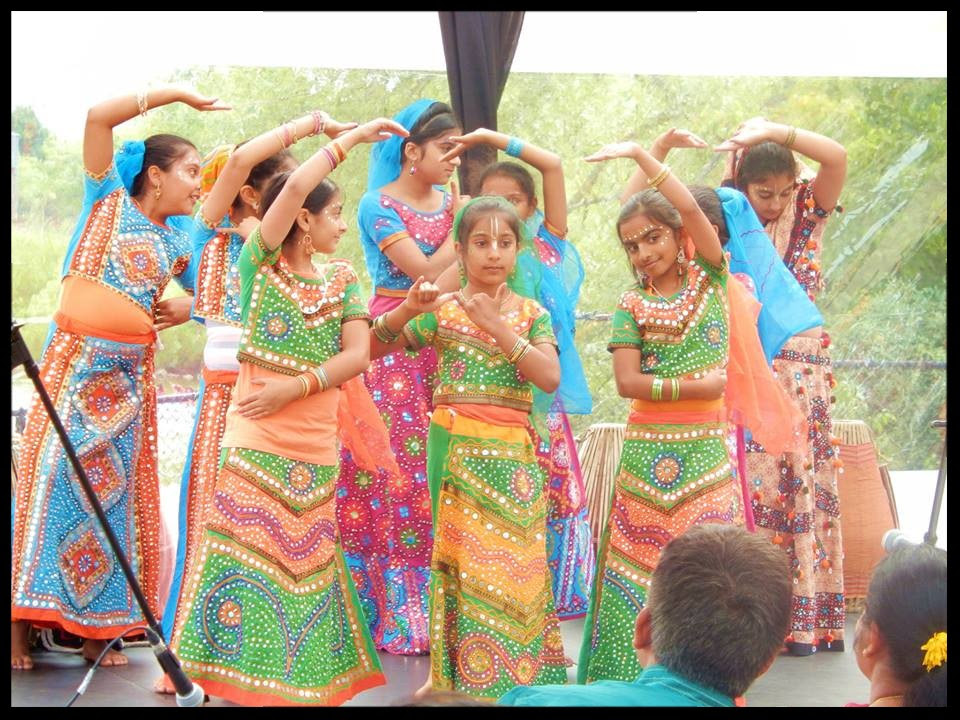 Sunday School
Sunday School

